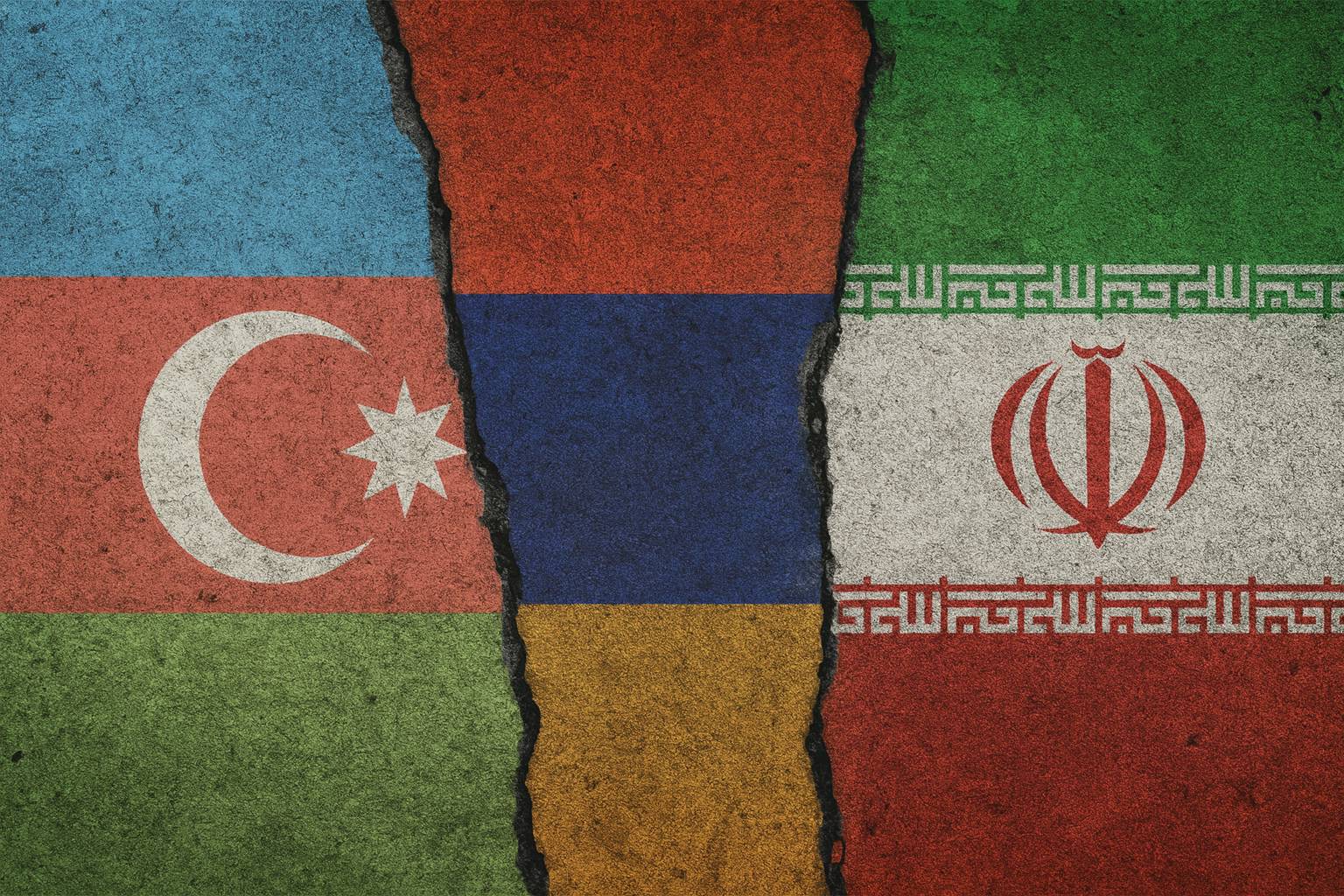By Mehmet Fatih Oztarsu
The U.S.-brokered peace talks between Armenia and Azerbaijan, culminating in the creation of the Trump Route for International Peace and Prosperity (TRIPP), have triggered a sharp strategic reaction from Iran. The 20-mile corridor through Zangezur grants Azerbaijan direct access to Nakhchivan under long-term U.S. management, reshaping regional connectivity and bypassing Iran. Tehran perceives the initiative as a U.S. encroachment on its northern frontier, eroding its leverage in the South Caucasus. The muted Russian response and Armenia’s growing openness to Western—and potentially Israeli—security ties deepen Iran’s unease, fueling fears of encirclement and diminishing its role as a key regional transit hub.

BACKGROUND: Brokered by the U.S., the latest Armenia–Azerbaijan peace talks have quietly but decisively reshaped the balance of power in the South Caucasus. At the heart of the deal is a newly designated transit Zangezur Corridor, officially named the Trump Route for International Peace and Prosperity (TRIPP), which would grant Azerbaijan direct access to its Nakhchivan exclave through southern Armenian territory. Moscow has responded with unusual silence, while Tehran has openly bristled at the emergence of a U.S.-designed transit network on its northern frontier.
Iran’s initial reaction to the U.S.-brokered Armenia–Azerbaijan peace framework has been visceral, with some prominent media organs terming it a “betrayal”. Tehran explicitly sees TRIPP as a U.S. footprint pressed onto its northern frontier. The plan envisions a 20-mile corridor through Armenia’s Syunik region, linking Azerbaijan to its Nakhchivan exclave, with development rights leased to a U.S. consortium for up to 99 years. More than redrawing borders, the project reshapes the balance of power and places a sustained U.S. commercial and political presence in the narrow strip where Iran has long turned geography into strategic leverage.
IMPLICATIONS: Iran interprets the recent Azerbaijan–Armenia peace talks not only as a potential shift in the regional balance of power but also as part of a broader geopolitical environment increasingly hostile to its interests. Tehran worries that a settlement, especially one facilitated or backed by Western actors (including Turkey), could strengthen Azerbaijan’s position, deepen Baku’s security and economic ties with the West and Israel, and reduce Iran’s leverage in the South Caucasus. These concerns are amplified by the expanding footprint of the U.S. and Israel in Azerbaijan, from intelligence cooperation to defense technology transfers, which Tehran perceives as part of a containment strategy aimed at its northern flank. Against this backdrop, any peace process that sidelines Iran or solidifies the U.S. influence in the region risks, in Tehran’s view, to tighten the strategic noose around its borders.
Iran’s historical memory of regional threats plays a significant role in shaping its foreign policy reflexes. In addition to the growing perception of U.S. and Israeli threats following the 1979 Islamic Revolution, the Soviet invasion of Afghanistan further heightened Tehran’s sense of vulnerability. Iranian officials, suspecting that the Soviets might use the Baloch as a stepping stone toward making Iran their next target, began seeking countermeasures. After the Soviet collapse, the country continued to frame its foreign policy around an intensifying rhetoric of U.S. and Israeli danger and the cooperation of Azerbaijan with these powers. Today, Washington’s renewed bid to reassert influence in the region is likely to aggravate Iran’s geopolitical anxieties, with indirect repercussions visible in Iran–Azerbaijan relations.
Tehran’s messaging, while varied in tone, consistently reflects unease about the deal. Ali Akbar Velayati, senior adviser to the Supreme Leader, warned that the corridor would become a “graveyard” for its backers; a classic piece of deterrent rhetoric aimed at raising costs and sowing doubt. At the same time, the Foreign Ministry expressed conditional support for a peace deal in principle, while cautioning against “foreign interference” near Iran’s borders. President Masoud Pezeshkian said that Iran’s core demand had been met, yet voicing unease over U.S. corporate involvement.
Tehran is not worried about lines on a map. It is losing the bargaining power that those lines used to confer. A corridor under Armenian law deprives Iran of the sovereignty argument it used against an “extraterritorial” Zangezur model, outside Armenian jurisdiction. However, U.S. stewardship narrows Iran’s room to shape rules, customs, and security practices at the edge of its border. A U.S.-organized logistics spine running from Turkey via Nakhchivan to Azerbaijan (tightening connectivity between Turkey and Central Asia) offers a shorter, more secure east–west route that bypasses both Russia and Iran.
The Russian reaction intensifies Iran’s dilemma. Moscow’s muted response by accepting a U.S. role while cautioning against “foreign meddling” signals that Russia, overstretched and weakened in credibility after the 2020 Second Karabakh War, lacks the capacity or will to reshape the deal. For Tehran, this translates into fewer veto options by proxy and a thinner buffer against Turkish and U.S. coordination. It also incentivizes Yerevan to deepen ties with Western partners, which is not acceptable for Tehran.
Economically, the corridor undermines Iran’s claim to constitute an indispensable regional bridge. Tehran has long positioned itself as the key link between the Persian Gulf, the Caucasus and the Black Sea, with initiatives like the International North–South Transport Corridor and electricity and gas swaps with Armenia designed to cement that role. A functioning TRIPP route diverts attention and investment toward the “Middle Corridor,” lowering the premium shippers pay for transit through Iran and shrinking Tehran’s leverage to extract side deals on access, security assurances or energy flexibility. Iran’s alternative options remain limited, as seen in its cautious approach to the Gulf of Hormuz closure in June 2025.
Security risks run in both directions. For Tehran, a U.S.-supervised logistics corridor along its northern frontier would invite surveillance and restrict its gray-zone tactics. Yet overt interference such as through intimidation, sabotage, or proxy harassment would likely backfire. Such moves could strengthen U.S.–Turkish coordination (and even Azerbaijani-Israeli coordination), justify reinforced security around the route and push Armenia toward even closer alignment with Washington and Brussels. Iran’s own experience shows that coercion is most effective when opponents lack a unifying patron; TRIPP provides precisely that.
Still, Tehran has a few levers left. The first is regulatory: it can push for “no military use” clauses, real-time customs transparency and verified policing regimes that limit the route’s securitization. The second is connectivity hedging. The new route builds upon Iran’s already existing north–south connections with Armenia, including the Meghri–Julfa railway link, expanded electricity exchanges, and predictable gas swaps. Thus, the U.S.-managed corridor supports, rather than replaces, Iranian routes. The third is political triangulation. Iran maintains open channels with Ankara on trade and energy, where their interests sometimes overlap, while giving Yerevan price and reliability benefits that only a neighboring country can offer.
CONCLUSIONS: Then, what is the balance sheet? In the short term, Iran faces a strategic setback in shaping the regional agenda. The U.S. has demonstrated its ability to achieve outcomes in the South Caucasus that Moscow could not, and the corridor effectively puts a purely Western hand on the flow of regional connectivity (the role of Turkey is also extremely important). In the medium term, Tehran can still limit the impact by quickly upgrading its own corridors, offering competitive transit pricing, and securing Indian and Gulf participation in north–south routes, turning competition into redundancy rather than outright replacement. Over the long term, the key question is whether Iran can tolerate a U.S. presence next door while extracting enough rules and linkages to avoid strategic encirclement.
An additional factor complicates this calculus: the possibility of an Israel–Armenia security partnership. While historically limited, such a relationship becomes more logical in a post-peace-deal environment where Yerevan seeks diversified defense ties beyond Russia and the West. This possibility is already being discussed in various circles. Israeli defense technology, already embedded in Azerbaijan, could find a foothold in Armenia in the form of counter-drone systems, border surveillance or intelligence sharing, especially if framed as balancing Ankara–Baku military cooperation. For Tehran, this would imply Israeli-linked security infrastructure on both its northwestern and northern flanks, eroding any remaining buffer zones and deepening the perception of encirclement. In such a scenario, even an economically beneficial TRIPP corridor would be overshadowed by the strategic risks it amplifies.
AUTHOR'S BIO: Dr. Mehmet Fatih Oztarsu is Assistant Professor at Joongbu University and Senior Researcher at the Institute of EU Studies at Hankuk University of Foreign Studies. He studied and worked in Baku, Yerevan, Tbilisi, and Seoul as an academic and journalist. He is the author of numerous articles and books on South Caucasus and Central Asian affairs. Additionally, he is a member of the Young Turkey–Young America fellowship program at the Atlantic Council and the Korean Society of Contemporary European Studies.



